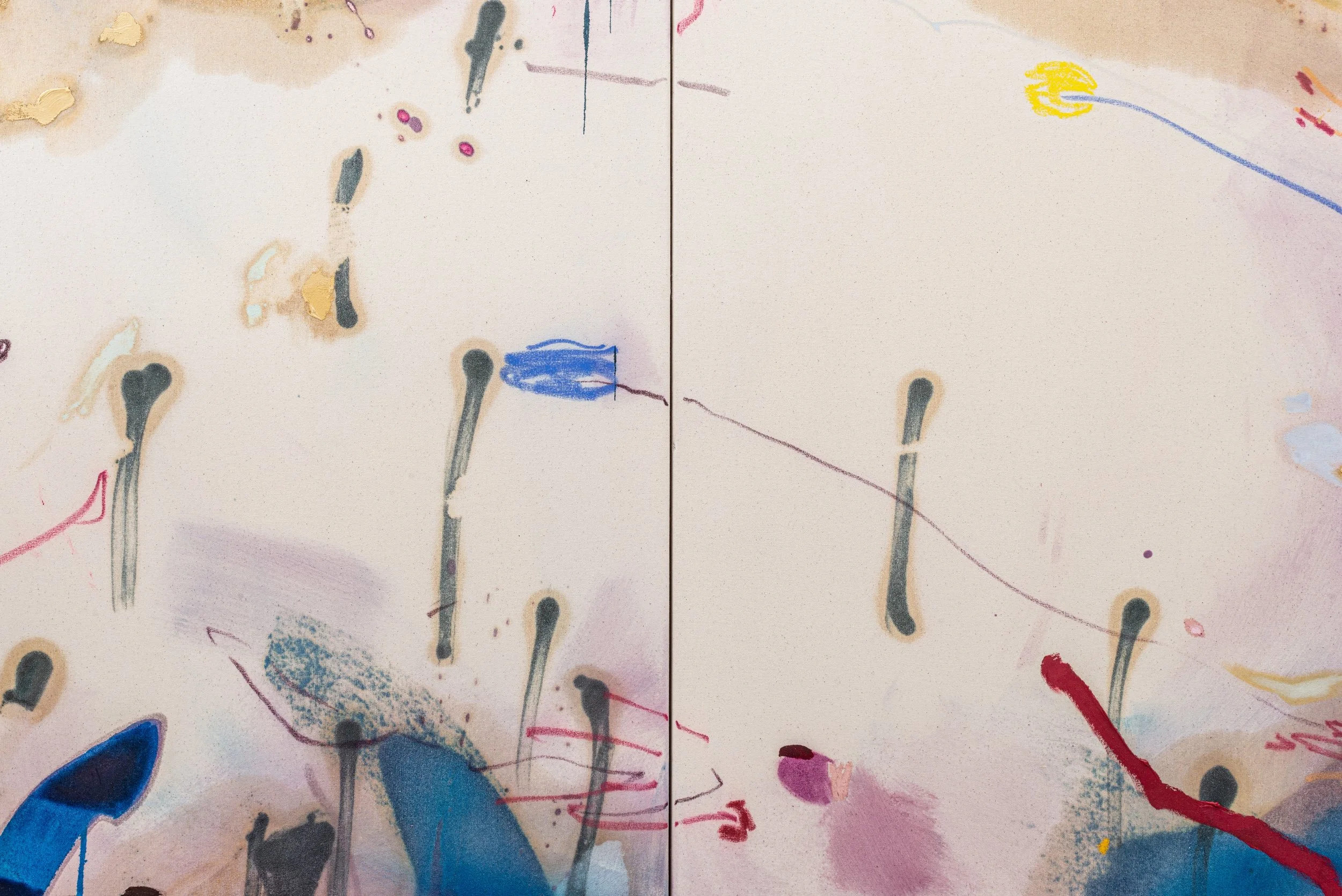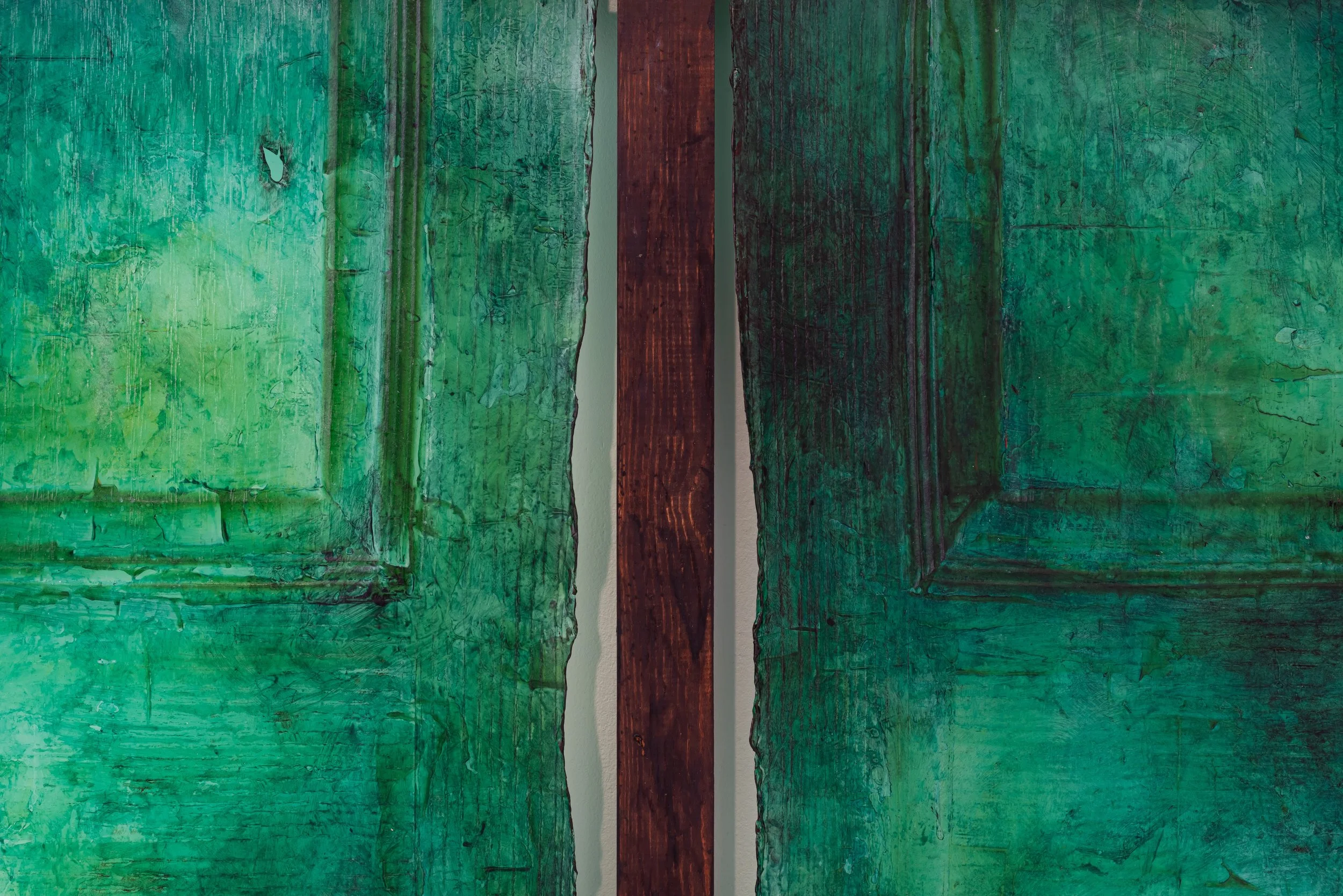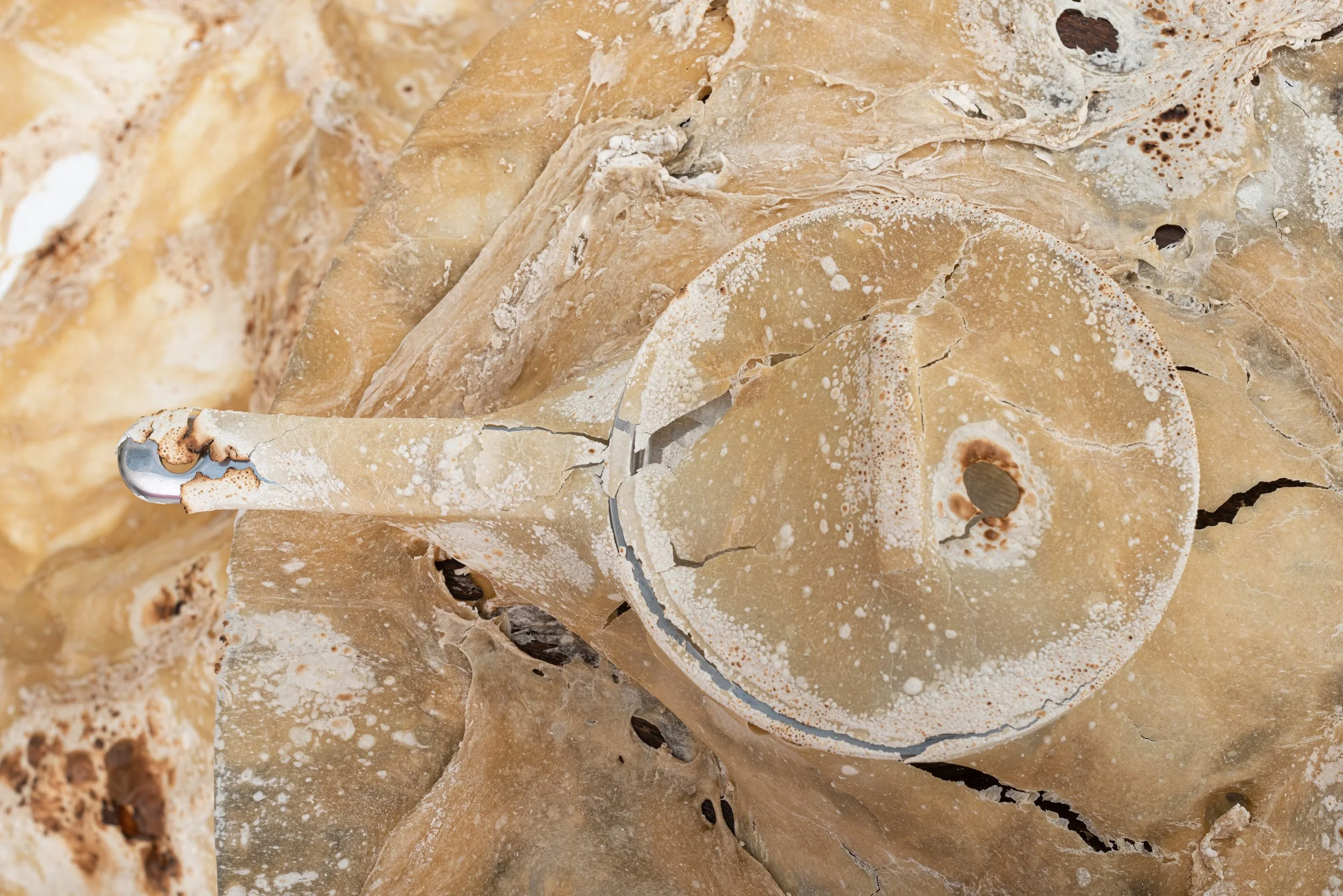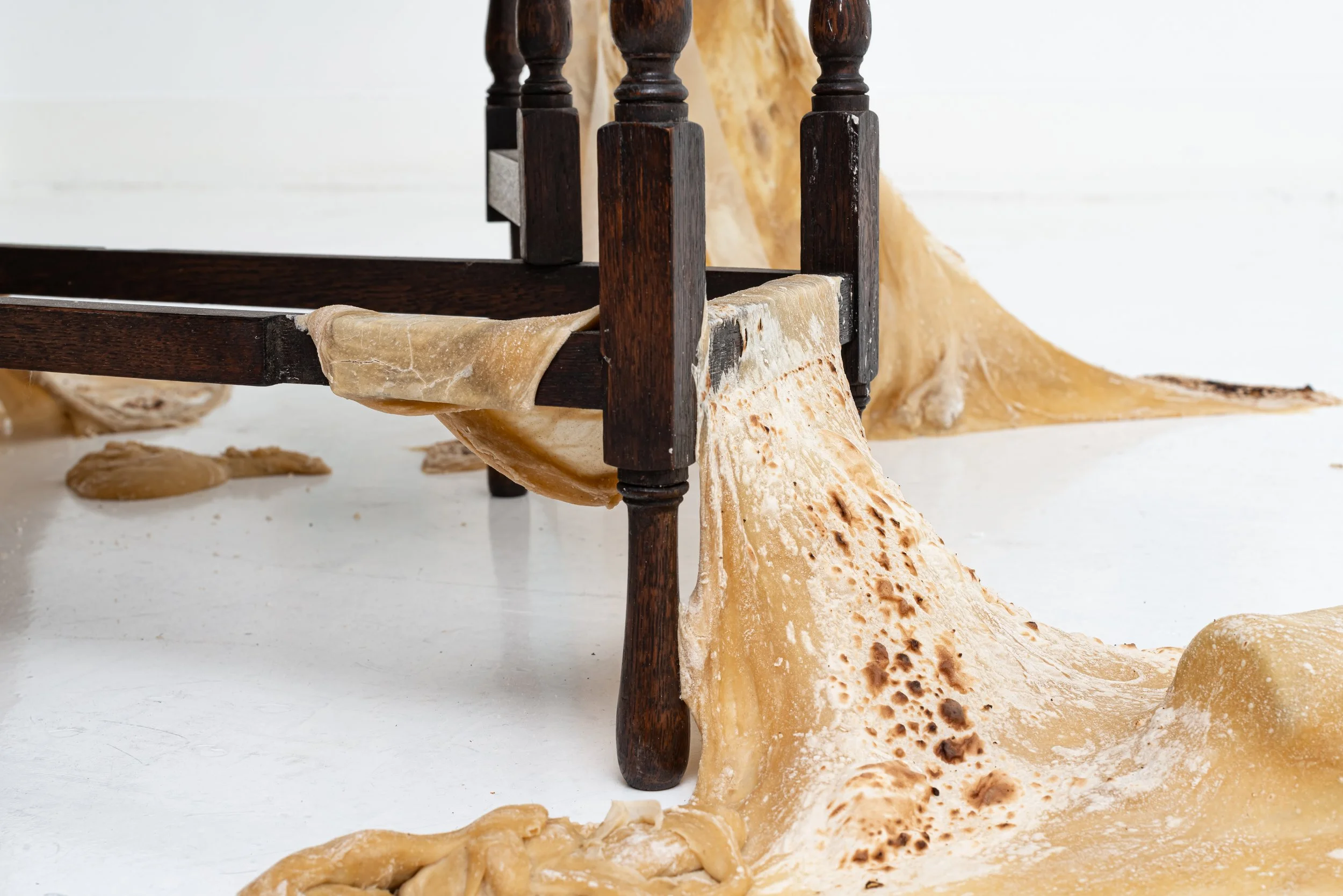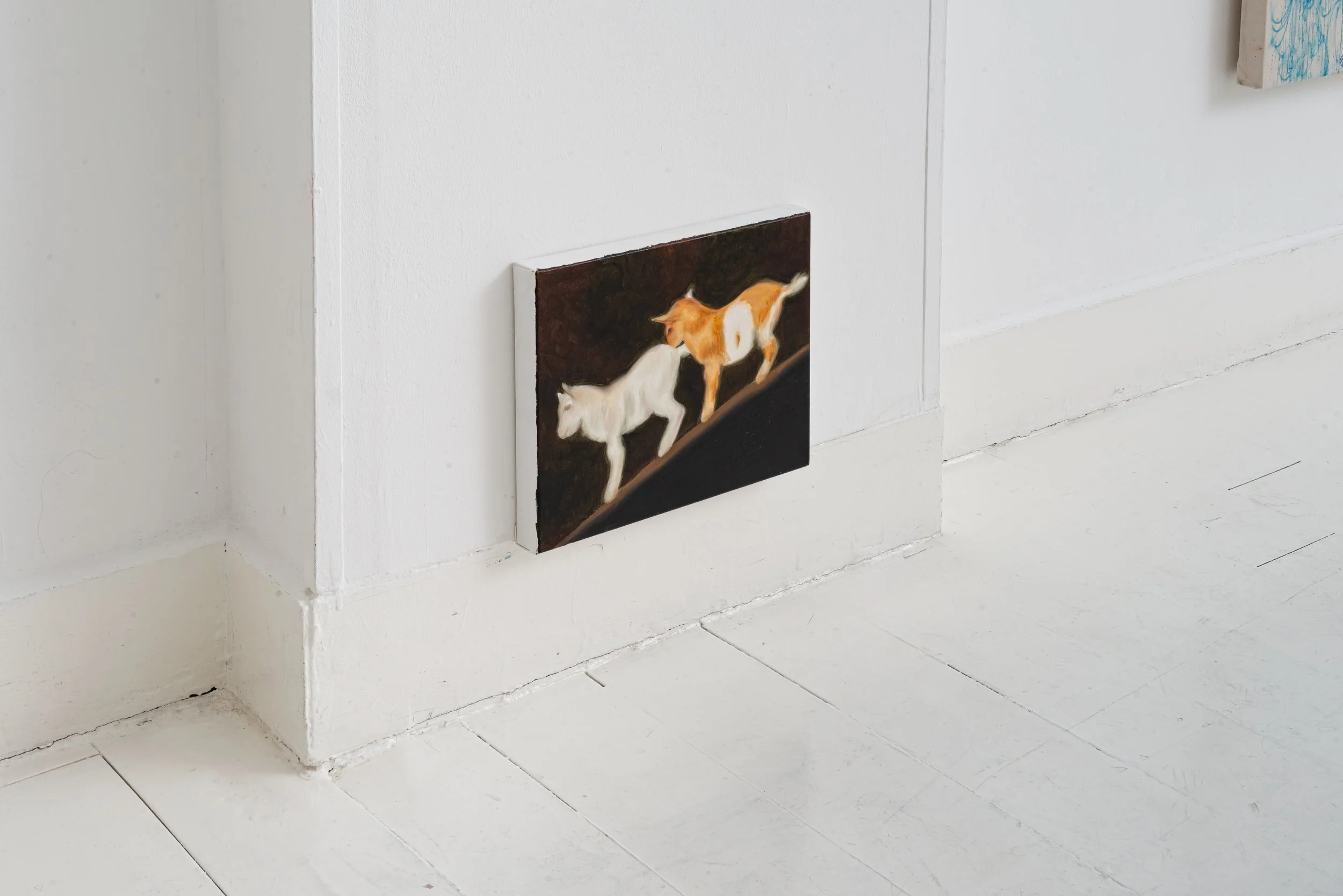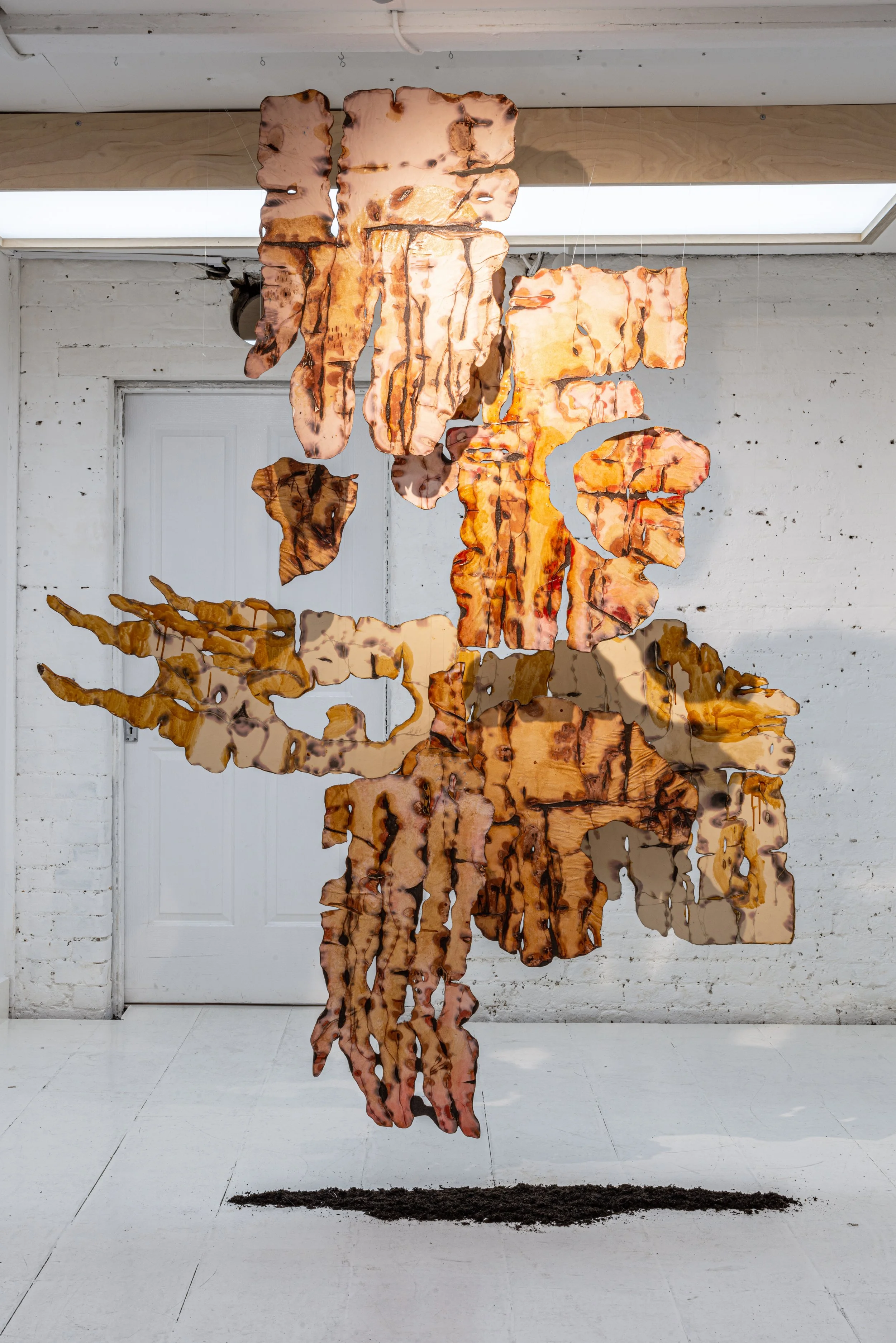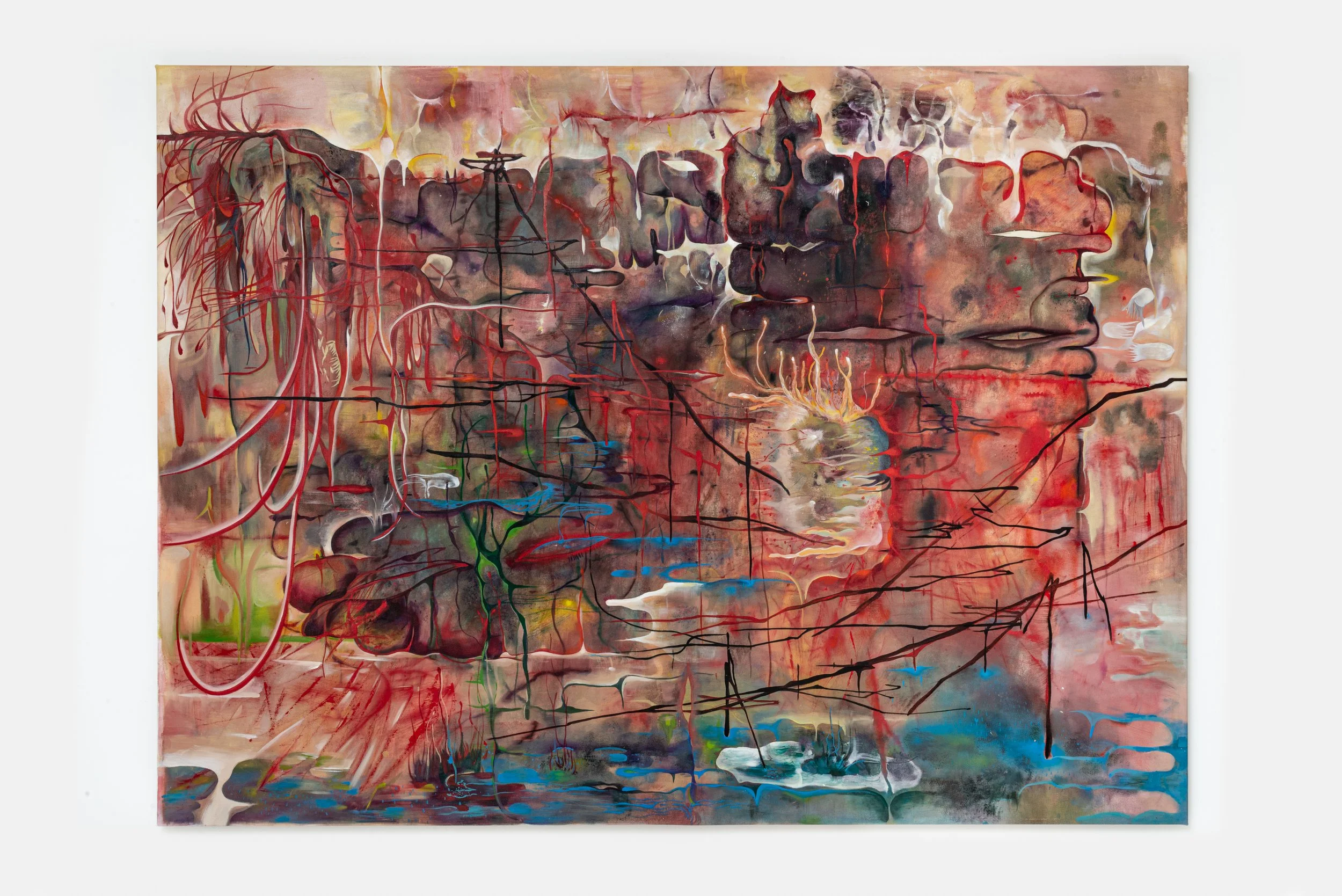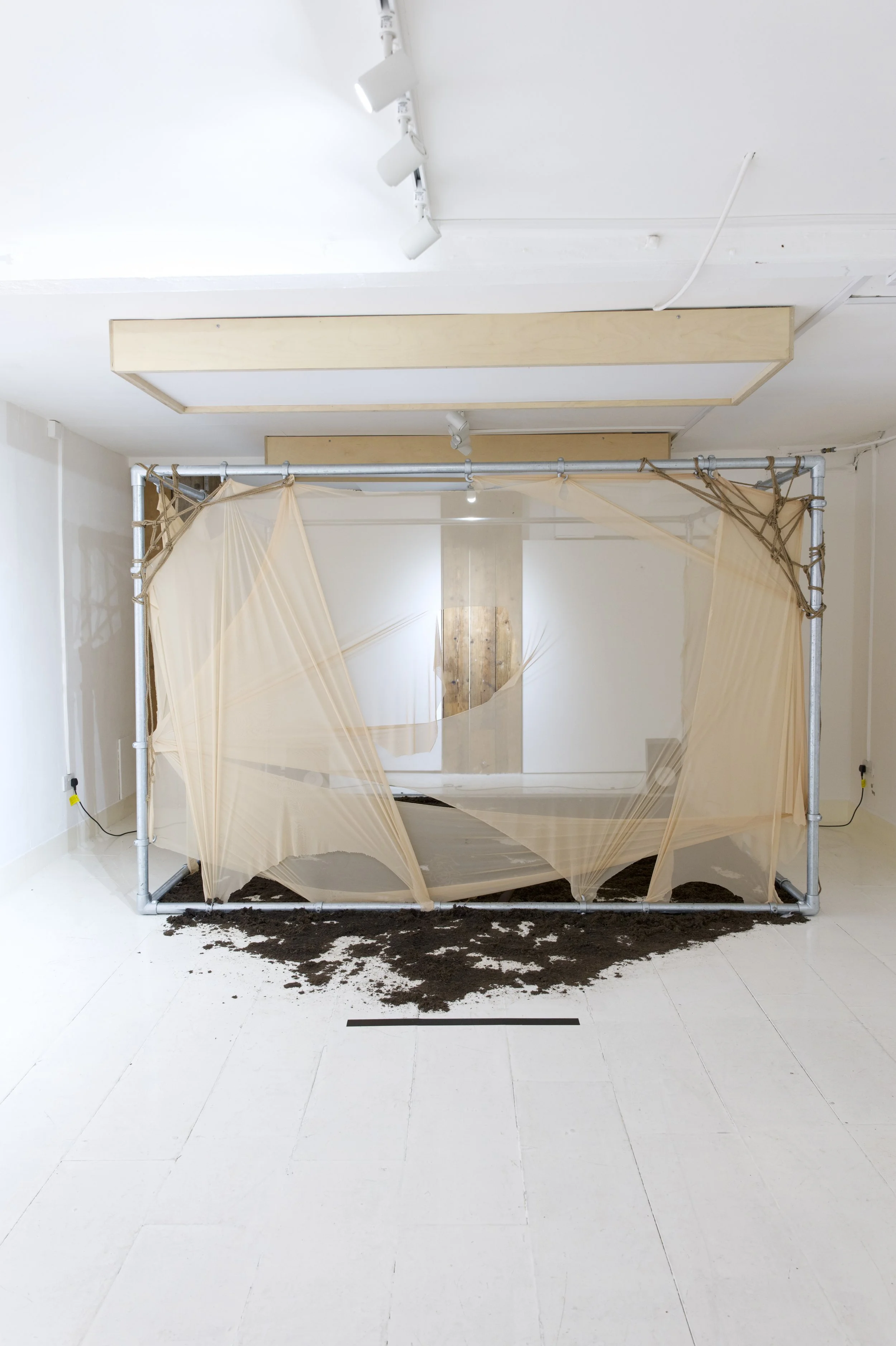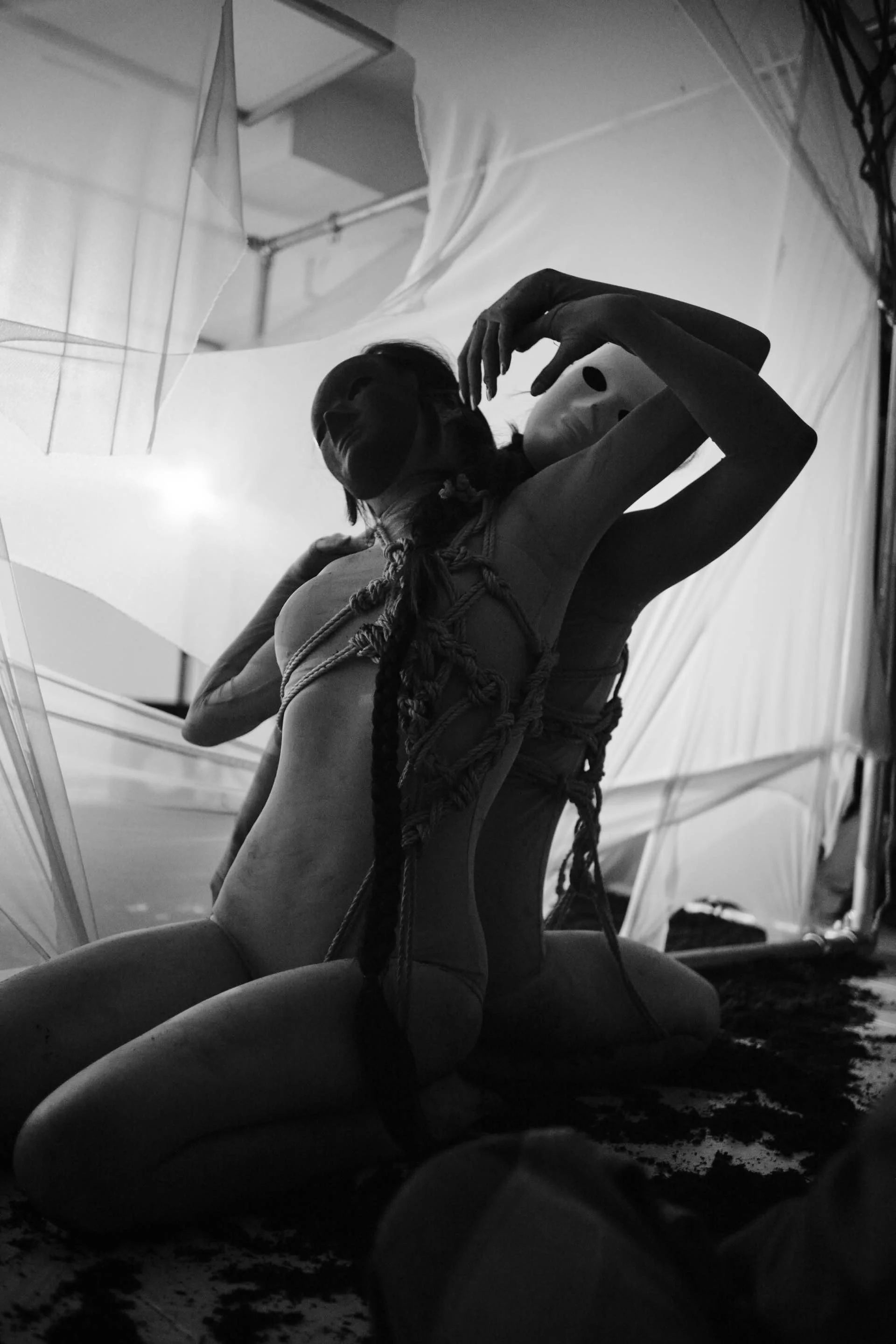The Future of Belonging
05.01 - 05.11 2024
Fitzrovia, London UK
Max Lee/ Yi Liu/ KV Duong/ Zhenlin Zhang/ Shuang Jiang/ Ningyue Qian/ Qingyao Dai/ Alison/ Siqi/ Saki
Speiro Projects proudly presents its inaugural exhibition, The Future of Belonging (Part I & Part II), featuring the works of eight emerging Chinese artists in various mediums including paintings, installations, and performances taking place at 67 Great Titcheld Street, with a Private View on Wednesday, 1st May. The Future of Belonging features works by Max Lee, Yi Liu, Shuang Jiang, KV Duong, Ningyue Qian, Qinyao Dai, Zhenlin Zhang, and Shibari Art Collective (Alison Chen, Siqi, Saki). Each artist explores themes of identity, belonging, and cultural heritage through their diverse practices, physically separated by the architecture of the space.
Part I occupies the entirety of the first floor, presenting a diverse array of artistic mediums including painting, sculpture, installation, and performance. Max Lee's captivating works beckon viewers into a realm of parallel worlds, seamlessly blending ction with philosophical exploration. Rooted in the concept of diaspora, Lee's lyrical paintings reflect his global upbringing spanning both Hong Kong and the UK, showcasing the fusion of Eastern and Western influences in his practice. Central to Lee's artistic process is the holistic approach to creation, where the canvas transcends mere surface to embody a complete entity. This methodology yields intriguing two-sided works, evoking a sense of both relinquishment and control, blurring the line between the visible and the concealed. Currently pursuing his MFA at the prestigious Slade School of Fine Art, Lee endeavors to breathe new life into narratives drawn from historical and contemporary sources, oering fresh perspectives on familiar scenes.
In a similar lens to Lee, Yi Liu's ethereal compositions challenge conventional interpretations of stories - both mythological and historical. Utilising both line and colour, Liu’s canvases are reminiscent of frescos, illustrations, and even comic books. With loose, lyrical brushwork, Liu’s canvases take a moment to fully digest. There are multiple narratives, references, patterns and colours that swirl and distort to reveal semi-abstracted gures, born from both past and present. Through these depictions, the artist explores themes of love and freedom, reecting deeply on traditional Chinese mythology, and the inherent power struggles that these so often showcase.
Ningyue Qian’s keen observations of societal nuances prompt a dierent kind of introspection. Qian is a sculptor and installation artist, who builds her research on documenting and analysing often-overlooked details. In The Future of Belonging, Qian will exhibit Cooking (2024). Drawing inspiration from past artists such as Judy Chicao, Martha Rosler and Mierle Laderman Ukeles, Cooking (2024) serves as a powerful reminder of the kitchen as a site of political activism. In this work, the artist explores themes of gender, inequality, domesticity and, importantly, the commodication of female labour. Qian will begin creating the piece during the opening of the exhibition, slowly kneading and stretching dough over chosen objects: a skillet; a pot; a table. Qian’s performance will then result in a nished object that exists in the space long after the artist has left, encouraging viewers to observe changes throughout the show’s programming.
KV Duong oers nuanced reections on diasporic existence, challenging prevailing narratives of identity and belonging. An ethnically Chinese artist born in Vietnam, Duong was brought up in Canada, and now lives in the UK as a queer individual. Their practice hovers across many disciplines: sculpture, painting, performance and installation. Currently focusing on the material qualities of latex, Duong’s unique works sit in-between traditional modes of making, being neither painting nor sculpture. Painting on both sides, in a similar fashion to Lee, these works are reminiscent of a window, or perhaps a door. Hinting at the swirling notions of access, border control, and division, Duong’s practice serves to critique his own existence as a member of the diaspora, as well as bring attention to the growing tension that exists between dierent ethnicities. KV will showcase his performance art practice on May 9th as a part of Speiro Projects’ participation in May’s Fitzrovia Lates program, where selected galleries in the neighborhood are open for extended hours.
Zhenlin Zhangi’s artistic practice transcends geographic and cultural boundaries, oering a theatrical exploration of Tibetan culture and its intersections with modernity. Through oil painting, Zhenli juxtaposes traditional Tibetan motifs with contemporary inuences, inviting viewers to reconsider societal norms and cultural assimilation. Capturing the essence of Tibetan life through symbolic imagery and theatrical drama, Zhenli’s artworks serve as a meditation on the uid boundaries between spiritual serenity and material desires.
Qinyao Dai’s practice delves deep into her personal experiences, translating sensations from her memories into soft and fragile works that convey feelings of vulnerability, helplessness, and alienation. In her gurative paintings, animals and soft toys serve as protagonists, representing her alter ego and conveying cultural and personal symbolism. Despite their seemingly innocent appearance, the titles of her paintings contrast with the cute style, revealing unsettling truths. Through her painterly gestures, Qinyao creates an intimate atmosphere, evoking a sense of gentleness akin to blushing cheeks. Yet, beneath this softness lies an uncanny narrative and surreal color palette, adding layers of complexity and strangeness to her work. Emotions blend seamlessly into her storytelling, quietly narrating tales of innocence lost, abandonment, tragedy, and resilience.
Descending into the basement of the exhibition space, we now enter Part II, a duo presentation of Shuang Jiang and performance artists Siqi Li , Alison Chen, and Saki Liu. Shuang Jiang's exploration of vulnerability delves into the intricacies of the human experience and takes a profoundly sensitive approach to her work. Working on a variety of materials including sheep skin and canvas, Jiang painstakingly captures the embedded psychological trauma of self harm. Materiality is central to Jiang’s practice, as seen in the exhibited works. Often stretching and burning the edges of her chosen medium, Jiang attempts to mimic the realism of the human body, and the vulnerability and trauma of past experiences. These works hold within them an incredibly intense personal narrative, creating a shocking, and incredibly emotive, viewing experience. In this exhibition, we see the Shuang’s prints installed hanging from the ceiling, a new form of presentation made specically for the exhibition.
At selected moments, this space is then activated by a performance by Shibari Art Collective: Alison Chen, Siqi Li, and Saki. Taking inspiration from Shuang Jiang’s works, the collective present a new performance piece titled Two in a Cube. Throughout the performance, Alison, Siqi and Saki explore the intricate layers of women's self-identity within the constraining narratives of East Asian society. The performance symbolises the conict between primal desires (the id) and moral principles inuenced by patriarchy (the superego) within a metaphorical societal framework, all in search of true self-consistency. The performers, obscured behind masks, embody a collective consciousness, engaging in simultaneous dialogue and soliloquy. Flesh-colored ropes extend from their bodies, representing both physical and spiritual constraints and connections. A rigid metallic rectangle, entwined with fabric resembling skin, constructs a metaphorical societal space and signies mental constraints. Meanwhile, the soil beneath symbolises the link between humanity and nature, highlighting the tension between innate desires and societal expectations. Two in a Cube will be performed on the opening night on May 1st and again on the closing night on May 11th. Through various mediums including painting, installation, performance, and mixed media, The Future of Belonging traverses themes ranging from mythology and spirituality to societal norms and cultural assimilation, bering profound insights into the diaspora Chinese experience.
Text by Josephine Bailey


